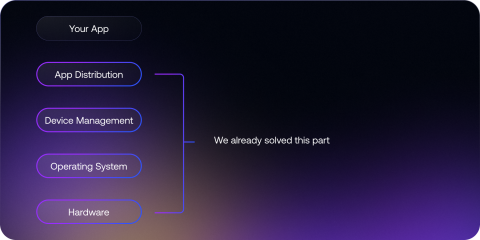Using digital signage dashboards to track sales KPIs
Sales is the central battleground for business competition, and sales teams certainly feel this pressure. Mantras like “always be closing” and ranked monthly quotas make sales a top-of-mind, always-on activity for your team. However, this pressure and competition can often lead to sales teams mistaking disorganized activity and movement with forward motion. In order to better manage a team of sales reps, companies have started increasingly relying on key performance indicator (KPI) metrics. Digital signage can be used to prominently display these KPIs on easily-viewed digital signage dashboard tools in your sales team’s office. Using digital signage displays to show dashboards of KPIs help keep the entire team on track and focused on achieving set company goals. In this article, we will describe five important KPI for your sales team to display on a digital signage dashboard in your office.
1. Number of outreach actions
Rather than complex percentage or ratio relationships between metrics, sometimes simple totals are the best indicators. Your sales team should quantify the number of outreach actions made by each rep each month. The particulars of this metric will differ depending on your particular business, as your business may focus on calls, emails, or even door-to-door visits to increase sales. Whatever your outreach method is, the total number of these actions needs to be measured. Sometimes administrative tasks or activity further down the pipeline can get in the way of sales outreach efforts that fill this very pipeline itself, and any interruption in feeding your pipeline should be tracked and dealt with swiftly. By tracking this metric on a sales dashboard for a digital display, your team can quickly address any sales pipeline issues as soon as they arrive.
2. Sales revenue by product
Obviously, the main goal of sales teams is to make sales and increase revenues. As useful as a wide array of data may be for managing your sales team, don’t lose focus on the main goal. You can analyze metrics and interactions between variables all day, but, if you’re not making revenue hit the account, nothing else matters. On your digital signage dashboard, be sure to display the company’s sales revenue numbers each month (or even each week). Additionally, be sure to segment these revenue numbers by product or service line. A single revenue number can mask poor performance in other product line. As a result, it is best practice for your sales team to disentangle topline revenue and segment this revenue by product. This practice can help your team quickly determine if any particular products are falling behind and need special attention.
3. Average lead contact time
Leads can go from “warm” to “cold” very quickly. This is even more so the case with regard to leads sourced online, through channels like social media or online paid advertising. It is imperative that your leads are contacted quickly in order to maintain each lead’s initial interest and enthusiasm for your product. Customers notice this fast response time too, and it makes your company appear more professional and respectful of customer requests. To measure this KPI, your team must source data on the time a lead contacted your company and on the subsequent time the employee was contacted. Admittedly, this can be a huge pain, and, for some channels, this data can be impossible to source. However, the more you are able to track this metric, the less likely you will be to lose leads due to slow follow up.
4. Time spent selling
It’s a nonsensical but all to common phenomenon among sales teams: the best sales reps get promoted to management tasks or training the remainder of the sales team. It’s as if the best performers are selected and removed from their best performing activity. This sidetracking can happen with both your best sales reps and the entire sales team more broadly. A useful KPI to track is the time spent selling per total time worked. This is a useful metric, as sales teams can quickly identify when too much sidetracking activity is occurring and who is suffering from this activity. If these sidetracking tasks are mission critical, your sales team can speak to company leadership about budgeting for more administrative assistance or other help so that your sales reps can spend their time selling. Ideally, this metric should be displayed daily on a digital display dashboard for sales metrics to the entire sales team, including the VP of Sales or equivalent employee.
5. Percent of deals closed
Another important metric is the percent of total deals closed. This metric provides data both on the ability of each sales rep for closing deals as well as on the quality of potential deals that are in the pipeline. Even the best sales rep cannot close a deal that is flawed from the start. Tracking this metric will help measure and hopefully influence your sales reps’ closing activities and abilities, and, similarly, it will also help increase the quality of what is considered a lead or potential deal. No one wants to sabotage this KPI for themselves by sourcing a large amount of unqualified deals. To best measure this KPI, be sure to sit down with your team and parse out what exactly your company considers a “deal”. Once this is figured out, the rest of your work is just tracking and simple arithmetic.
When KPIs are tracked, you can use this data to compare sales metrics month over month and even week over week. Ideally, these metrics are tracked at the level of the individual sales rep too so that performance can be compared to the rest of the team and discussed at the end of each period. Digital signage helps this entire process, as measured KPIs are always available to your sales team. End of the month review meetings no longer need to be wasted simply showing and displaying data. This can be done every day by your digital signage displays. These meetings can instead be used to discuss and make decisions from KPI data that has previously been made visible to everyone through your digital signage dashboard. To learn more on your digital signage options, check out Screenly’s digital signage offerings.





